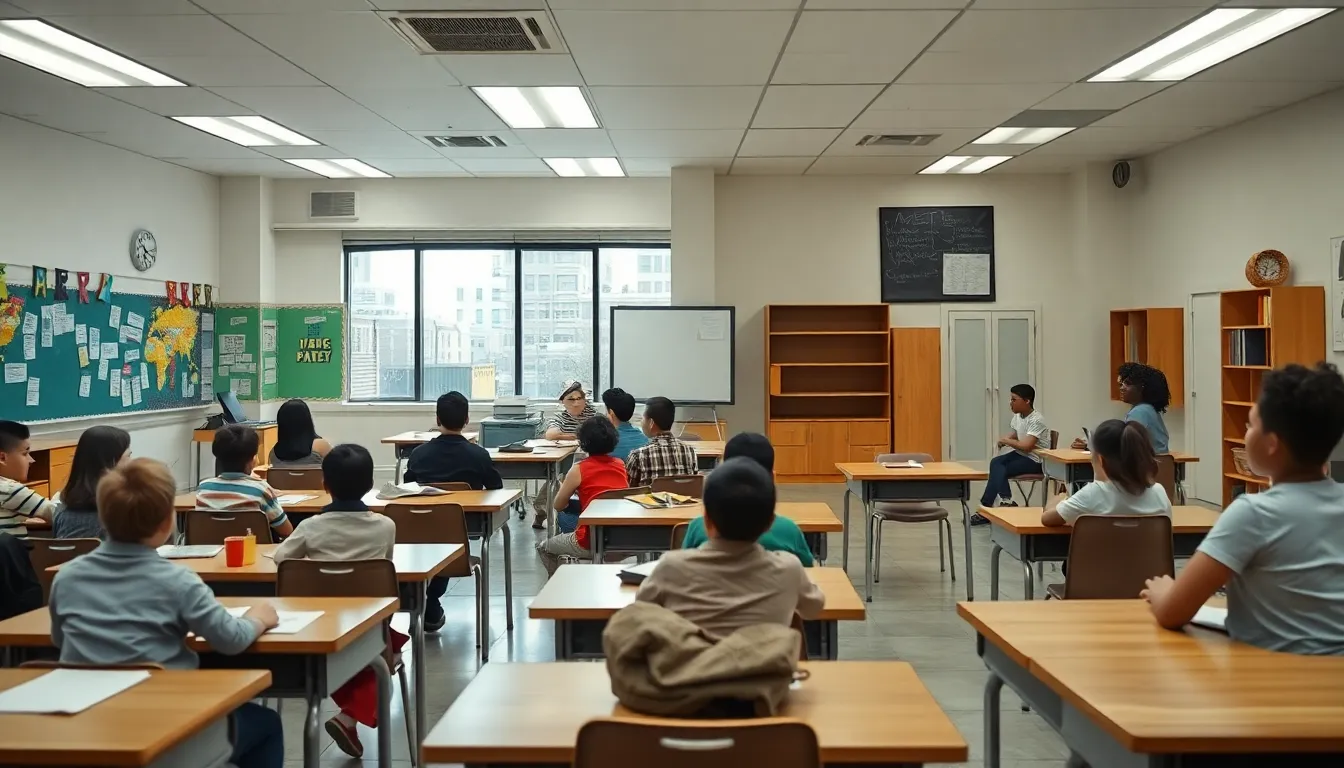Education should be a gateway to success, but today it often feels more like a game of dodgeball, difficult, competitive, and unfairly skewed against certain players. From funding inequities that leave many students in the lurch to the overwhelming weight of standardized tests, the education landscape is fraught with challenges. Toss in mental health issues and a digital divide, and you’ve got yourself a complicated cocktail of problems. Let’s jump into the pressing issues in education today and see what’s really going on behind the scenes.
Table of Contents
ToggleFunding Inequities

Funding inequities represent a significant hurdle in the educational system today. In many areas, public schools receive funding based on local property taxes. This can create stark differences in resources available to students. Schools in affluent neighborhoods often boast updated technology, well-maintained facilities, and comprehensive extracurricular programs. Meanwhile, those in lower-income communities struggle to provide basic supplies and even qualified staff. This disparity contributes not just to unequal education quality, but it also reinforces socio-economic divides.
State and federal funding formulas aim to bridge these gaps, yet many still fall short. Why should a child’s zip code determine the quality of their education? It’s a question that continues to spark debate among policymakers and educators alike. Some states are attempting to carry out more equitable funding strategies, but real change requires sustained investment and political will.
Impact of Standardized Testing
Standardized testing has become ubiquitous in American education, often viewed as the ultimate measure of student success. Yet, the emphasis on these tests can be problematic. By concentrating resources and teaching strategies around preparing students for tests, schools may neglect broader educational goals. Creativity, critical thinking, and social skills don’t always translate well to multiple-choice answers.
Also, high-stakes tests can exacerbate inequity. Schools with fewer resources may struggle to prepare students adequately, leading to lower performance scores. Disparities become evident, with marginalized students often facing the brunt of these challenges. Critics argue that the current reliance on standardized testing oversimplifies what it means to be successful in school and can even lead to burnout among both students and teachers.
Mental Health Challenges
Today’s students face a myriad of mental health challenges that can hinder their educational experience. The pressures of academic achievement, combined with social media influences, can create a perfect storm of anxiety and depression. Schools are increasingly recognizing the importance of mental health, yet many still lack adequate resources to support students effectively.
Counselors are often overwhelmed, with student-to-counselor ratios that make personalized attention difficult. Programs aimed at promoting mental health awareness are crucial, but they need funding and trained professionals to succeed. Institutions must evolve to take mental health as seriously as academic performance.
The Digital Divide
In our technology-driven world, a reliable internet connection can feel as important as a textbook. Yet the digital divide is a glaring issue in education today. According to recent studies, millions of students lack access to necessary technology for remote learning and research.
This gap not only impacts academic performance but also prepares students for future careers where tech proficiency is vital. As schools push for more digital learning tools, they inadvertently widen this divide. Financial investments in technology are essential but must be paired with policies ensuring equitable access for all students.
Curriculum Relevance and Inclusion
Curriculum relevance is another area where schools often fall short. Many students find the material they are taught to be disconnected from their lives and realities. Issues surrounding inclusion are equally pressing: many curriculums fail to represent diverse cultures, histories, and perspectives. This lack of representation can alienate students, leading to disengagement and underperformance.
Educators are beginning to challenge traditional curriculum models, pushing for materials that reflect the experiences of all students. Engaging students means creating a curriculum that not only educates but also inspires and validates their identities.
Teacher Shortages and Support
The education sector is currently grappling with a significant teacher shortage, which affects school quality and student learning. Many teachers face overwhelming workloads, low pay, and limited support, leading to dissatisfaction and high turnover. In many communities, schools struggle to fill teaching positions, particularly in subjects like math, science, and special education.
While some programs offer incentives for teachers in underserved areas, more comprehensive solutions are essential. Increasing support systems for teachers, along with competitive salaries, can help attract and retain quality educators. Investing in teacher wellness is as critical as investing in student success.


